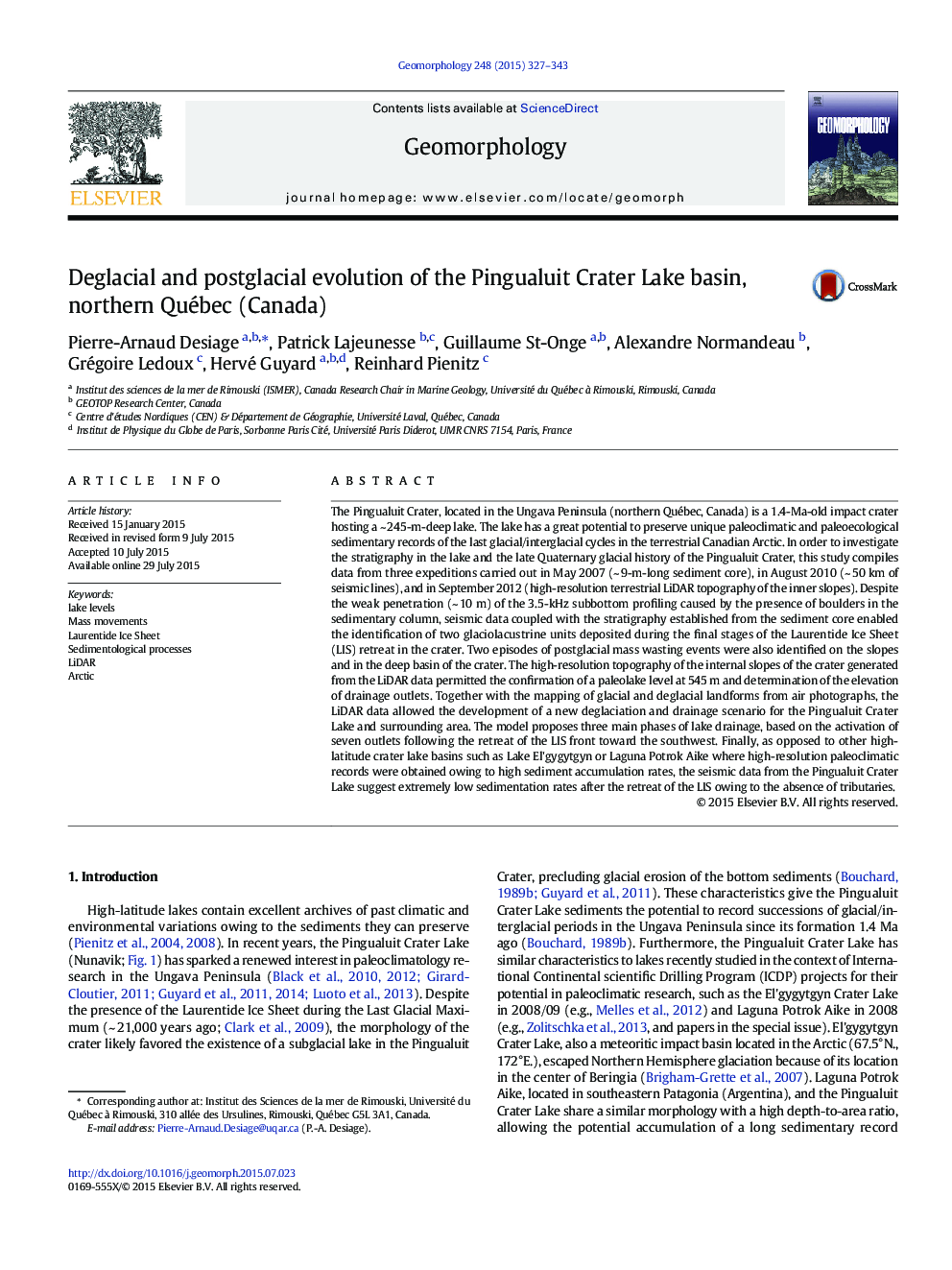| کد مقاله | کد نشریه | سال انتشار | مقاله انگلیسی | نسخه تمام متن |
|---|---|---|---|---|
| 6432076 | 1635401 | 2015 | 17 صفحه PDF | دانلود رایگان |

- We analyze glacial and hydrological features in an Arctic crater lake area.
- Main sedimentation processes were investigated.
- Terrestrial LiDAR, a 3.5Â kHz subbottom profiler and aerial photographs were used.
- We present a new deglaciation model for the crater and surroundings areas.
- Sedimentation was dominated by mass movements since the retreat of the LIS.
The Pingualuit Crater, located in the Ungava Peninsula (northern Québec, Canada) is a 1.4-Ma-old impact crater hosting a ~Â 245-m-deep lake. The lake has a great potential to preserve unique paleoclimatic and paleoecological sedimentary records of the last glacial/interglacial cycles in the terrestrial Canadian Arctic. In order to investigate the stratigraphy in the lake and the late Quaternary glacial history of the Pingualuit Crater, this study compiles data from three expeditions carried out in May 2007 (~Â 9-m-long sediment core), in August 2010 (~Â 50Â km of seismic lines), and in September 2012 (high-resolution terrestrial LiDAR topography of the inner slopes). Despite the weak penetration (~Â 10Â m) of the 3.5-kHz subbottom profiling caused by the presence of boulders in the sedimentary column, seismic data coupled with the stratigraphy established from the sediment core enabled the identification of two glaciolacustrine units deposited during the final stages of the Laurentide Ice Sheet (LIS) retreat in the crater. Two episodes of postglacial mass wasting events were also identified on the slopes and in the deep basin of the crater. The high-resolution topography of the internal slopes of the crater generated from the LiDAR data permitted the confirmation of a paleolake level at 545Â m and determination of the elevation of drainage outlets. Together with the mapping of glacial and deglacial landforms from air photographs, the LiDAR data allowed the development of a new deglaciation and drainage scenario for the Pingualuit Crater Lake and surrounding area. The model proposes three main phases of lake drainage, based on the activation of seven outlets following the retreat of the LIS front toward the southwest. Finally, as opposed to other high-latitude crater lake basins such as Lake El'gygytgyn or Laguna Potrok Aike where high-resolution paleoclimatic records were obtained owing to high sediment accumulation rates, the seismic data from the Pingualuit Crater Lake suggest extremely low sedimentation rates after the retreat of the LIS owing to the absence of tributaries.
Journal: Geomorphology - Volume 248, 1 November 2015, Pages 327-343